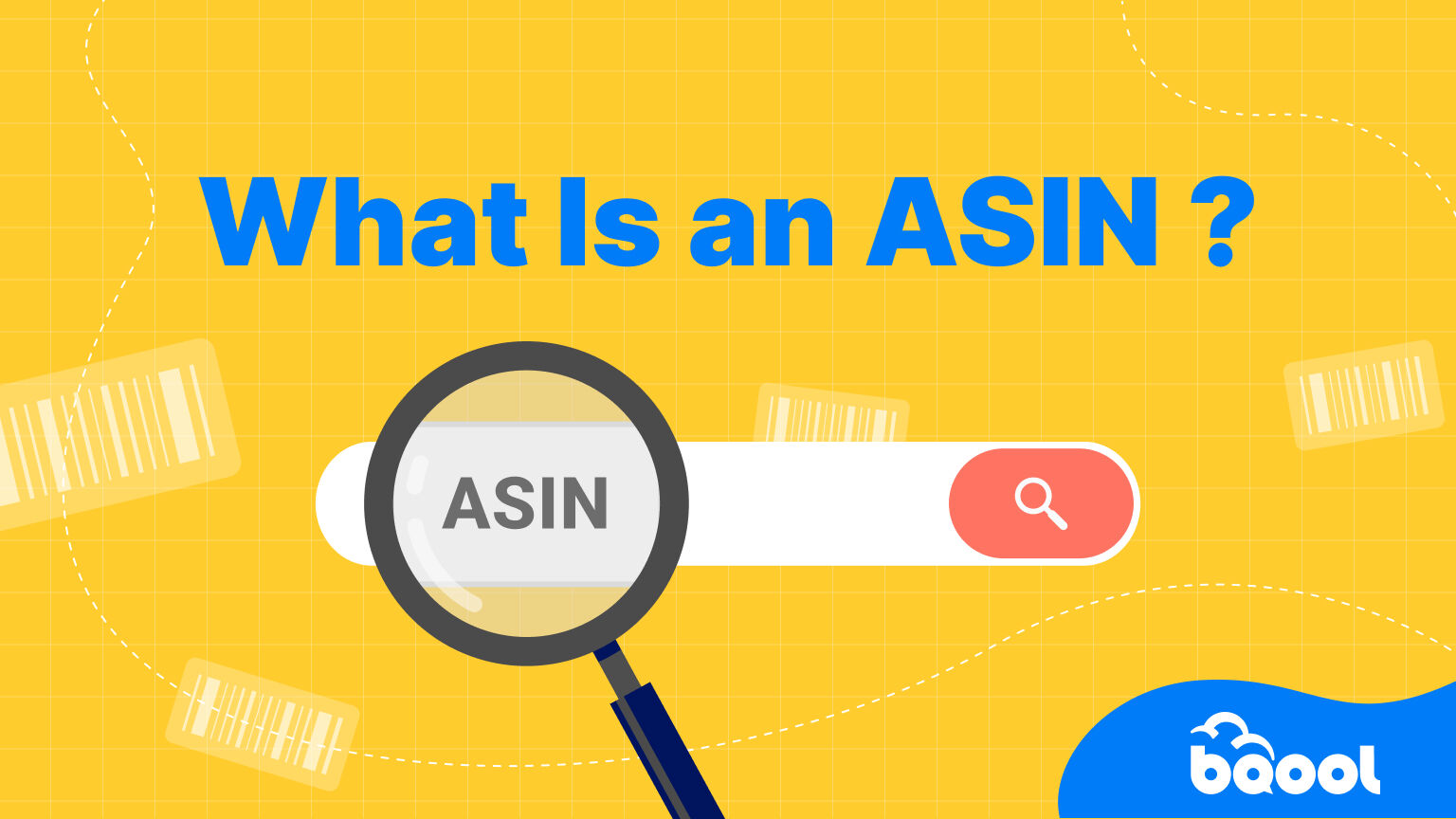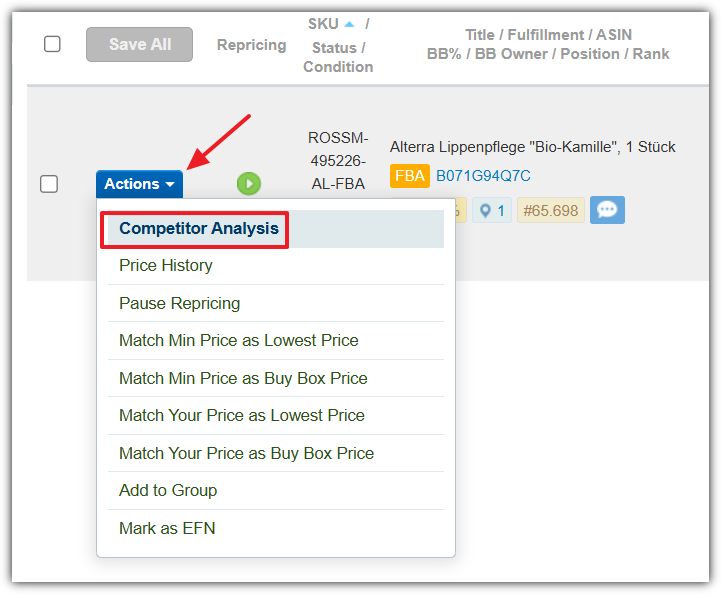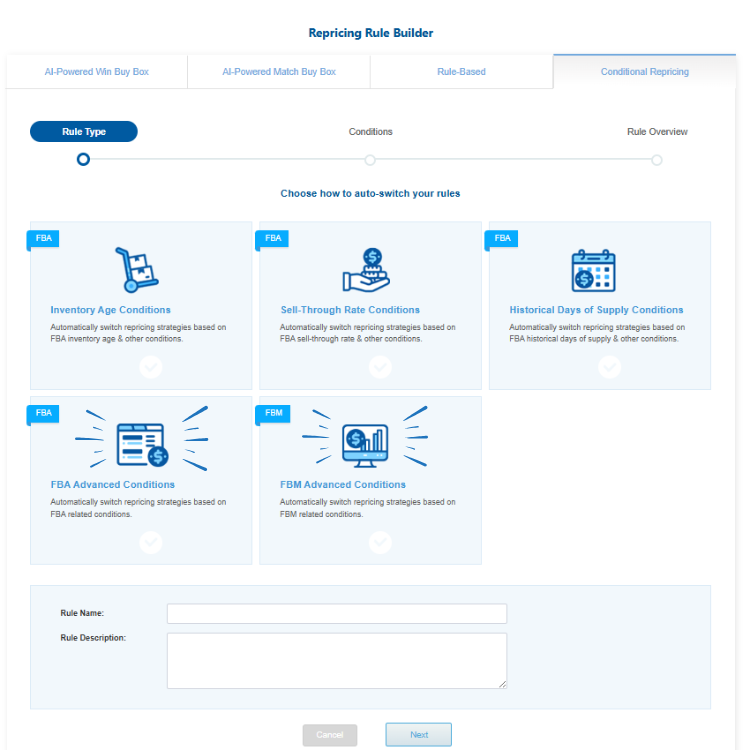What Is an ASIN (And how to find it on a box)?

Overview
When you start selling on Amazon, one of the first of many acronyms you’ll run into is ASIN. If you shop on Amazon, you may have seen it too when scrolling through the product details section of a listing. But what is an ASIN? And more importantly, can you find it printed on a product box?
In this guide, we’ll clear up the confusion. You’ll learn what an ASIN is, how to find one and why understanding ASINs is essential for winning the Buy Box and staying competitive with repricing tools.
What Is an ASIN Number?
An ASIN, or Amazon Standard Identification Number, is a 10-character alphanumeric code that Amazon assigns to every product in its catalog.
It was designed to be understood by Amazon’s internal tracking system, every product you see on Amazon is tied to an ASIN so the platform can organize its massive catalog, prevent duplicates, and link sellers’ offers to the right product detail page.
How ASINs Differ From Other Identifiers
When you sell products on Amazon, you’ll come across different types of product identifiers. They may look similar, but each serves a different purpose:
UPC (Universal Product Code)/EAN (European Article Number)
Barcodes created by GS1 (a global organization that creates and manages product identification standards) printed on packaging, and used for scanning in retail stores worldwide. UPCs are standard in North America, while EANs are used more internationally. Take for instance, the back of this handcream, where can find an EAN-13 barcode.

ISBN (International Standard Book Number)
A unique number for books. Each edition (paperback, hardcover, e-book) gets its own ISBN. On Amazon, the ISBN is also used as the book’s ASIN. Below is an example of a book ISBN.

ASIN
Amazon’s own 10-character code, assigned when a product is first listed. It only exists within Amazon’s ecosystem and is essential for linking your listing to Amazon’s catalog. Below is a screenshot of where you can find an ASIN on Amazon marketplace.

Put simply, UPC/EAN and ISBN are global identifiers, while ASINs exist only inside Amazon.
Is the ASIN Number Printed on the Box?
The short answer is, no.
Unless you’re looking at an Amazon-applied FNSKU label (the scannable code used in Amazon’s fulfillment centers), you won’t see the ASIN printed directly on a retail box.
Instead, product packaging usually shows:
- UPC or EAN (the barcode)
- ISBN (for books)
- Manufacturer model numbers
How to Find the ASIN If You Only Have the Box
If you’ve only got the product packaging, don’t worry. Here’s how to trace the ASIN:
- Locate the UPC/EAN/ISBN on the packaging (near the barcode).

- Search that code on Amazon. It usually brings up the product page.
- Find the ASIN in the product URL (the /dp/ code) or in the Product Details section.

Pro tip: Sellers can also use barcode scanner apps or Amazon Seller Central’s “Add a Product” tool to quickly match packaging codes to an ASIN.
Why ASINs Matter for Sellers: Competing at the Listing Level
Every product on Amazon revolves around its ASIN, and so does your competition. When multiple sellers offer the same item, their offers are all linked to the same ASIN. In practice, this means that every Buy Box battle takes place at the ASIN level.
Repricing tools are built around this concept. They track competing offers for each ASIN and adjust your price automatically, helping sellers remain competitive without the need for constant manual updates.
BQool Feature Spotlight: Competitor Analysis
Repricers like BQool use the ASIN for their Competitor Analysis feature. This feature presents the top 20 offers for an ASIN, along with details like whether a seller is FBA or FBM, and whether their inventory is in stock or backordered. Having this level of visibility allows sellers to make more informed pricing decisions, not just quicker ones.

ASIN vs SKU: What’s the Difference?
It’s easy to confuse ASINs with SKUs, but they serve very different purposes:
- ASIN: Assigned by Amazon. Used to organize the catalog. Fixed and unique per product listing.
- SKU (Stock Keeping Unit): Created by the seller. Used for internal inventory tracking. Flexible and customizable.
For example, a seller might have two SKUs (FBA-SHIRT-001 and FBM-SHIRT-001) tied to the same ASIN for a T-shirt if they’re selling through both FBA and FBM.
Where is the ASIN and SKU on BQool Repricing Central?
In BQool’s Repricing Central, you can view both the ASIN and your custom SKU side by side. This makes it easier to manage pricing rules across fulfillment channels.

When You Need to Create a New ASIN
You’ll need to create a new ASIN if your product doesn’t exist in Amazon’s catalog yet.
- Manual creation: Add a new product via Seller Central.
- Bulk upload: Useful for large catalogs, though prone to upload errors.
Be careful, creating duplicate ASINs can cause suppression or listing removal.
Conclusion
ASINs are the backbone of Amazon’s catalog, linking products, defining competition, and determining Buy Box eligibility. While they aren’t printed on boxes, knowing how to find and use them is essential for accurate listings and smart selling.
Once your offers are tied to an ASIN, the real challenge is staying competitive. Repricers like BQool address this by analyzing competition at the ASIN level and adjusting prices automatically, helping sellers win more Buy Boxes while protecting their margins.
FAQs
What does ASIN mean for a product?
It’s Amazon’s unique 10-character code that identifies a product in its catalog.
How do I get an ASIN for my product?
If the product already exists, Amazon assigns one automatically. For new products, a new ASIN is created when you list it in Seller Central.
Is an ASIN the same as an ISBN?
Not exactly. ISBNs identify books globally, but on Amazon, the ISBN also serves as the book’s ASIN.
What is the difference between SKU and ASIN?
ASINs are Amazon’s fixed catalog IDs. SKUs are seller-created codes for internal inventory tracking.
What happens if you use the wrong ASIN?
Your listing may be suppressed, removed, or flagged for misleading customers.

Overview
When you start selling on Amazon, one of the first of many acronyms you’ll run into is ASIN. If you shop on Amazon, you may have seen it too when scrolling through the product details section of a listing. But what is an ASIN? And more importantly, can you find it printed on a product box?
In this guide, we’ll clear up the confusion. You’ll learn what an ASIN is, how to find one and why understanding ASINs is essential for winning the Buy Box and staying competitive with repricing tools.
What Is an ASIN Number?
An ASIN, or Amazon Standard Identification Number, is a 10-character alphanumeric code that Amazon assigns to every product in its catalog.
It was designed to be understood by Amazon’s internal tracking system, every product you see on Amazon is tied to an ASIN so the platform can organize its massive catalog, prevent duplicates, and link sellers’ offers to the right product detail page.
How ASINs Differ From Other Identifiers
When you sell products on Amazon, you’ll come across different types of product identifiers. They may look similar, but each serves a different purpose:
UPC (Universal Product Code)/EAN (European Article Number)
Barcodes created by GS1 (a global organization that creates and manages product identification standards) printed on packaging, and used for scanning in retail stores worldwide. UPCs are standard in North America, while EANs are used more internationally. Take for instance, the back of this handcream, where can find an EAN-13 barcode.

ISBN (International Standard Book Number)
A unique number for books. Each edition (paperback, hardcover, e-book) gets its own ISBN. On Amazon, the ISBN is also used as the book’s ASIN. Below is an example of a book ISBN.

ASIN
Amazon’s own 10-character code, assigned when a product is first listed. It only exists within Amazon’s ecosystem and is essential for linking your listing to Amazon’s catalog. Below is a screenshot of where you can find an ASIN on Amazon marketplace.

Put simply, UPC/EAN and ISBN are global identifiers, while ASINs exist only inside Amazon.
Is the ASIN Number Printed on the Box?
The short answer is, no.
Unless you’re looking at an Amazon-applied FNSKU label (the scannable code used in Amazon’s fulfillment centers), you won’t see the ASIN printed directly on a retail box.
Instead, product packaging usually shows:
- UPC or EAN (the barcode)
- ISBN (for books)
- Manufacturer model numbers
How to Find the ASIN If You Only Have the Box
If you’ve only got the product packaging, don’t worry. Here’s how to trace the ASIN:
- Locate the UPC/EAN/ISBN on the packaging (near the barcode).

- Search that code on Amazon. It usually brings up the product page.
- Find the ASIN in the product URL (the /dp/ code) or in the Product Details section.

Why ASINs Matter for Sellers: Competing at the Listing Level
Every product on Amazon revolves around its ASIN, and so does your competition. When multiple sellers offer the same item, their offers are all linked to the same ASIN. In practice, this means that every Buy Box battle takes place at the ASIN level.
Repricing tools are built around this concept. They track competing offers for each ASIN and adjust your price automatically, helping sellers remain competitive without the need for constant manual updates.
BQool Feature Spotlight: Competitor Analysis
Repricers like BQool use the ASIN for their Competitor Analysis feature. This feature presents the top 20 offers for an ASIN, along with details like whether a seller is FBA or FBM, and whether their inventory is in stock or backordered. Having this level of visibility allows sellers to make more informed pricing decisions, not just quicker ones.

ASIN vs SKU: What’s the Difference?
It’s easy to confuse ASINs with SKUs, but they serve very different purposes:
- ASIN: Assigned by Amazon. Used to organize the catalog. Fixed and unique per product listing.
- SKU (Stock Keeping Unit): Created by the seller. Used for internal inventory tracking. Flexible and customizable.
For example, a seller might have two SKUs (FBA-SHIRT-001 and FBM-SHIRT-001) tied to the same ASIN for a T-shirt if they’re selling through both FBA and FBM.
Where is the ASIN and SKU on BQool Repricing Central?
In BQool’s Repricing Central, you can view both the ASIN and your custom SKU side by side. This makes it easier to manage pricing rules across fulfillment channels.

When You Need to Create a New ASIN
You’ll need to create a new ASIN if your product doesn’t exist in Amazon’s catalog yet.
- Manual creation: Add a new product via Seller Central.
- Bulk upload: Useful for large catalogs, though prone to upload errors.
Be careful, creating duplicate ASINs can cause suppression or listing removal.
Conclusion
ASINs are the backbone of Amazon’s catalog, linking products, defining competition, and determining Buy Box eligibility. While they aren’t printed on boxes, knowing how to find and use them is essential for accurate listings and smart selling.
Once your offers are tied to an ASIN, the real challenge is staying competitive. Repricers like BQool address this by analyzing competition at the ASIN level and adjusting prices automatically, helping sellers win more Buy Boxes while protecting their margins.










September 23, 2025
This was super helpful! Finally understand the difference between ASINs, UPCs, and ISBNs, and how finding the ASIN can improve my Amazon selling game. Great clear explanation, especially on using repricing tools.manus ai api